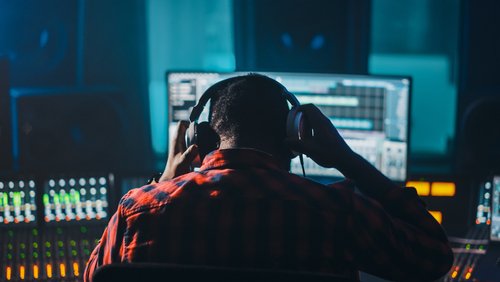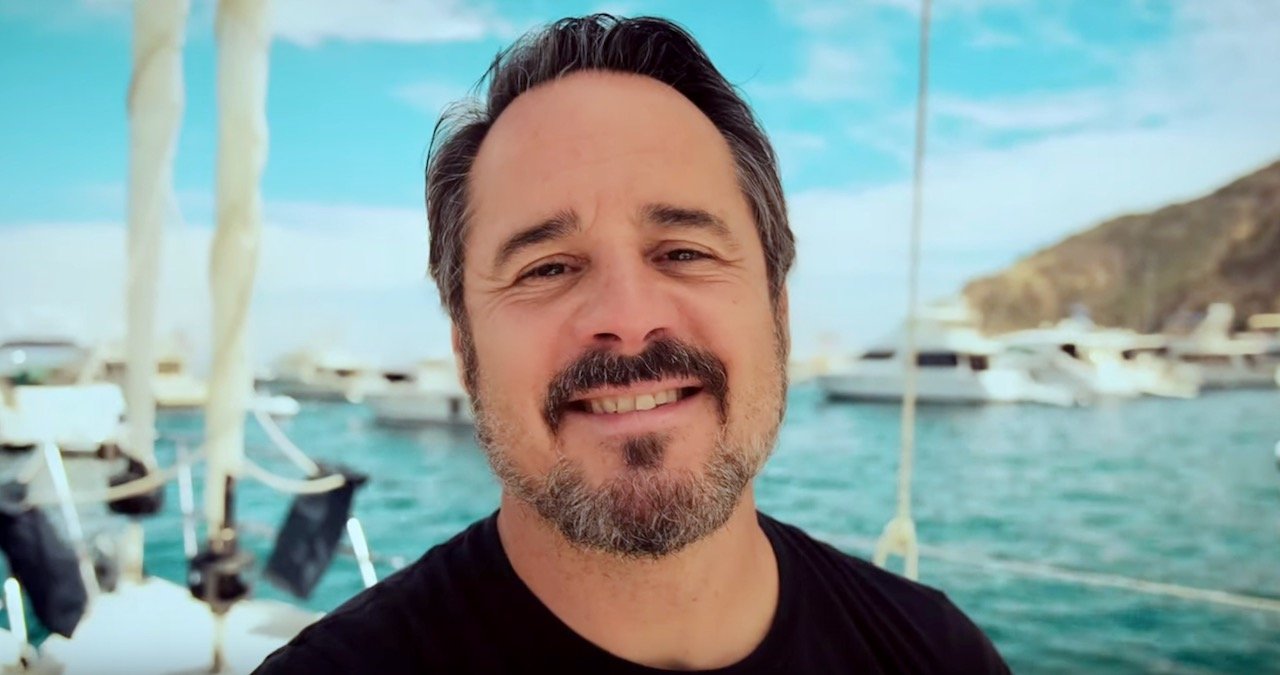How to Submit Music for Sync Placement
October 31, 2024
Landing your first sync placement can be tough but not impossible. The more you submit music for sync the greater your chances of getting that coveted placement in film, TV, or advertising.
But sync placement is much more than just a numbers game. It’s also about relationships and building a rapport with music supervisors so that they regard you as a trusted source.
In this Sync Songwriter blog post, we’ll outline the steps you need to take before you even make that first pitch. Follow these guidelines and you will be well on your way to having what it takes to succeed in sync licensing. If you’re new to sync and aren’t sure what it’s all about, start by checking out our guide, “What is Sync Licensing” here.
1. Getting Your Music Ready for Sync Placement

You’ve spent years honing your craft and you’ve written great songs with catchy melodies, great hooks, and engaging lyrics.
Your songs are strong and you think they would be perfect for placement in TV or film. You feel ready. Perhaps.
Before you can submit music for sync licensing, it is imperative that you make a reality check.
Is the song you are wanting to pitch to music supervisors “broadcast quality?” Would it meet the needs of the project or sync brief? Do you have an instrumental version?
Remember, music supervisors get hundreds of pitches for any given sync placement. Most are from trusted sources including record labels, publishers, sync agents, music libraries, and artists they may have worked with in the past.
Your track must be an excellent recording that has been professionally mixed and mastered.
In other words, if you were to place your song in a playlist of similar artist songs, or even with artists you were influenced by, would your song stand up to the rest? That is your competition.
And since music supervisors generally ask for an instrumental version as well (with no vocals), your instrumental track must also be broadcast quality.
2. What Makes a Song Good for Sync?
If you are new to sync licensing, you may feel that if your song is radio friendly and ideal for streaming, it should also be perfect for sync placement, but that’s not always the case.
Before you submit music for sync licensing, consider the following.
Broadcast Quality
The four components of broadcast quality music include:

1. Excellent Performances
2. Excellent Quality Recording
3. Professionally Mixed
4. Professionally Mastered
We’ve already covered why your songs and instrumentals need to be broadcast quality. There are the odd times, however, when music supervisors are looking for period-specific songs that were recorded back in the 70s, 80s, or 90s.
These songs may not be broadcast quality but that is what they are looking for at the time. These types of requests are the exception rather than the rule.
Make sure all your newly recorded material including the vocal and instrumental tracks, are broadcast quality before you submit it for music licensing.
Project Needs
Along with TV and film, music supervisors sometimes work across a wide spectrum of projects including indie films, network shows, gaming, and movie trailers, plus advertising. Songs that might work for TV and film may not work for trailers or for advertising and vice versa.
The music supervisor’s job is to find the best song to complement the story that is shown on screen. The song needs to help advance the plot and emulate what the characters are feeling so do your research before you pitch.
Subject Matter

Your songs must also fit the mood and subject matter of the project. Songs that have universal themes and can fit many different scenarios are easier to place. That doesn’t mean your lyrics need to be generic, just applicable to different sorts of shows, movies, or ads.
It’s not impossible, but it is difficult to find a general sync placement for songs that are centered around politics, the environment, or other specific causes. They may be better suited to documentaries on the subject.
Song Dynamics
Songs that are very linear with little dynamics are tougher to place in sync licensing. There are just fewer opportunities for them. Producers and editors tend to favor songs that have some dynamic shape and build to them that will give them more options when editing.
Lyrics
Lyrics that are specific and mention proper names or places tend to be “too-on-the-nose”, making them difficult to use for sync placement. If your song has explicit lyrics, you must always declare this upfront. It’s not a bad idea to also record a clean version of your song so you can submit both versions when pitching.
Vocal Melody
If the vocal melody is constant throughout the song it can get in the way of dialog. Music editors prefer songs with musical breaks between the lyric lines since this makes it a lot easier when editing.
Avoid Fade-Outs
Songs that end with fade-outs get fewer placements than songs with a definitive ending. Part of your job as a songwriter is to make the music editor’s job as easy as possible so it’s best to avoid fade-outs on the songs you submit for sync placement. This can make it difficult for the music editor to find a quick out point for the song without it sounding cut off.
Instrumentals & Stems
Try to always have broadcast quality instrumentals (with vocals removed) ready to pitch as well. Though not always necessary, more and more projects are starting to request the stems as well.
Stems don’t mean all the individual tracks. A drum stem will have all the drum parts mixed together. A background vocal stem will have all the background vocals mixed together. So your stems may include drums, background vocals, guitars, keyboards, strings, percussion, etc.
You can read more about what stems are or by watching this quick video:
3. How Does Sync Placement Work?
As mentioned, music supervisors tend to work with trusted sources when looking for songs for sync placement. They will often send out sync briefs to their trusted sources including record labels, sync agents, music publishers, music libraries, certain artists, etc.
The music supervisors know that these trusted sources will only submit songs that match exactly what is asked for in the sync brief.
Let’s look at some of these “trusted” sources a little closer.
Music Publishers
Music publishers will have a large catalog of songs they have vetted and pre-cleared so when a sync brief comes in, they can immediately source the right songs to pitch.
Major Record Labels
Like music publishers, most major record labels will also have an extensive catalog of pre-cleared songs to choose from so they can pitch the best songs to match the sync brief.
Recording Artists
While some recording artists refuse to allow their music to be used for sync placements, many are quite open to it. If you are reading this, I assume you are too!
Well-established artists have an established brand and genre that may instantly come to mind when a music supervisor is looking for a specific placement. Many other times they are looking for more affordable indie music that fits their budget.
Music Libraries
There are two types of music libraries.
1. Non-exclusive Music Libraries – One of the problems is non-exclusive music libraries tend to retitle songs multiple times to better track royalty payments. The last thing a music supervisor wants is to receive the same song multiple times under different titles.
2. Exclusive Libraries – If you are going to submit your songs to a music library, we recommend you consider only exclusive music libraries since the music supervisors tend to trust them more. They are harder to get into, but you also tend to be competing with many fewer musicians since their catalog is typically smaller.
Not always, but music libraries tend to be the go-to source whenever a music supervisor needs music for small projects with a limited budget or an instrumental that fits a specific mood or genre.
Music libraries provide plenty of options and most will also include alternate takes and stems, offering more options for editing the music to a scene. They also tend to have a smaller licensing fee.
The music supervisors also know the music will be properly vetted and pre-cleared, making music libraries a great place to go when they need a quick turnaround. And, because music libraries tag all the music in their catalog, it’s very easy to search for the right song when needed.
So, placing your songs in a music library can be a great way to get your foot in the door.
The downside of music libraries is that you are a small fish in a very big pond because the music library could have hundreds if not thousands of similar songs in your category. Getting a sync placement through a library can become like a lottery.
On the other hand, if your song is very niche there will be far fewer placement opportunities, but when that type of song is needed, you become a big fish in a small pond.
Sync Agents
Like a music library, a sync agent will have a catalog of songs that they represent and pitch for sync placement. They don’t own or control any of the publishing rights but will charge a percentage of the sync fee if they secure a placement for your song.
Indie Artists
So, is there a place for indie music in film and TV? Absolutely.
If your music is as good as anything supplied by the “trusted” sources, and if your song pitch is just as professional, your song stands a good chance of not only being heard but also being placed.
4. Why Music Supervisors Love Indie Artists
Here are a few other good reasons why this is a great time for indie artists in sync licensing.
Discovering New Talent – In my experience, many music supervisors also have a soft spot for indie artists and continually look for new music on places like Spotify and Soundcloud.

After all, most music supervisors are also hardcore music lovers, and many are musicians themselves. They absolutely love discovering new talent and want to be part of the journey for new artists on the rise.
Smaller Project Budgets – More and more projects are working on tighter budgets, which opens more sync placement opportunities for indie artists. Sometimes a music supervisor would rather place multiple indie songs in a project rather than blow the entire budget on one song by a major artist. However, if the supervisor really wants a well-known song by a major artist but can’t afford it, they will often use a cover song released by an indie artist.
One-Stop Easy Clearance – Music supervisors are in charge of clearing the songs before they can be used and many projects, especially in television, work on very tight deadlines. Major artists’ songs tend to have multiple co-writers and multiple publishers involved. It’s much easier and quicker to clear an indie song that is One-Stop, where the artist owns and controls the song, the master, and the publishing.
Unique Sound – Big business drives the music of major artists and labels who tend to follow the trends. Often, their music is very formulaic and can lack the depth or emotional impact that a particular scene requires. This depth and emotional impact can often be found in indie music. Also, film and TV content creators (plus advertising brands) all want to appear “in-sync” as it were, with tomorrow’s emerging music trends.
5. Know & Understand Your Obligations
As an indie artist, it is not only imperative that you know and understand how sync licensing works, but you must also know what your obligations are.

Securing Rights – In order to submit music for sync placement, you must own and control all the rights to the song and master recording. If you don’t, you will need to secure the right to represent the song from your other co-writers and music publishers if there are any.
The music supervisor will also need to have the contact information of everyone that has ownership of the song.
Split Sheets – If you have co-writers, be sure to have them all sign a split sheet agreement prior to pitching your song. The split sheet total must add up to 100%.
Work for Hire Contracts – It’s not a bad idea to have your music producer, studio musicians, and background vocalists all sign a work-for-hire contract. This contract shows that they’ve been paid for their services and don’t have any rights or ownership in your song.
Register With a PRO – It’s also a good idea to register your songs with your country’s performing rights organization (PRO). PROs like ASCAP and BMI in the United States and SOCAN in Canada are responsible for collecting and distributing performance royalties.
6. Contacting Music Supervisors
Unsolicited Song Submissions – On any given day, music supervisors will get possibly hundreds of submissions, most of which are unsolicited. The last thing you want is to end up in their spam folder.
If you are going to reach out to them, you must do your research. Watch the shows they’ve done or are doing. Know what projects they are working on and the type of music they may be looking for so you can match your music and pitch to their needs.

Match Your Music to the Project – If you’ve done your research, you’ll soon learn the mood, style, and genre of music that will fit specific shows. If a show you are considering pitching to primarily uses hip-hop or rap music, don’t pitch any other style of music unless it was specifically requested.
Email Protocol – Emails need to be short and to the point. It helps if you can show them that you know their work and explain why you think your song might work with their project. It also helps if your music is “one-stop” and easy to clear.
The Art of the Song Pitch
At Sync Songwriter we know how difficult it can be for indie artists to find a sync placement for their songs. That’s why we created The Art of the Song Pitch (AOTSP) online course.
- Research Music Supervisors & Their Shows – We teach you how to research music supervisors and the shows they work on so you can successfully target your music to the right projects.
- Produce & Record Music for Sync – We also show you how to produce and record your songs for sync plus how to vet your music prior to pitching.
- Perfect Your Song Pitch – Once you’ve prepared your songs and targeted your music for the right music supervisors and projects, we’ll show you how to create the best possible pitch so that you will get noticed.
- Copyrights, Royalties, Etc. – We also cover things like deal points, copyrights, song clearances, royalties and more.
- Pitch Your Songs to Music Supervisors – Finally we connect you with the gatekeepers in sync where you’ll pitch your songs to a live online panel of music supervisors.
By the end of the course, you’ll have the tools and knowledge to become a sync licensing professional as well as made those all-important first connections. If you’d like to find out more, sign up for the waiting list to be the first to know when we open enrollment.
About Sync Songwriter

The Art of the Song Pitch and Sync Songwriter were both created by JUNO award-winning producer, Chris SD.
Our mission is to not only help independent artists and songwriters learn and understand the sync licensing world but to also help them build relationships with music supervisors.
Our goal is to teach you how to be a sync licensing professional and then introduce you to top music supervisors looking for music.
We can show you what you need to do and more importantly, what not to do when preparing and pitching your songs to music supervisors. We’ll also show you how to find the right sync placement opportunities for your music.
Music supervisors looking for music are the gatekeepers of the songs that make it into TV shows, films, and ads.
At Sync Songwriter, we introduce you to some of the industry’s top music supervisors because building relationships is vital to your success in sync licensing.
If you still have questions about how sync placement works or about Sync Songwriter, feel free to reach out and contact us.
Hey! Give us a shout about anything really.
contact Sync Songwriter
Our goal is for you to start getting your music into TV & film.
Comments
Share to: